In the 21st century, we often see antiquity as a period of time when great artworks were produced despite limitations in technology. From Greek statues in fine marble and the colossal architecture of ancient Egypt, to classical masterpieces displayed in the Vatican and ornately-decorated manuscripts from the Arab world, these works of art were usually commissioned under the pretext of advancing a religion. As the world’s largest continent, Asia has witnessed the birth, rise and fall of a number of religions, and naturally this means that across its vast swathes of land incredible pieces of art have been produced for millennia. Some of these are already known to us, but many of them are still buried in layers of history.
Of all corners of Asia, the Indian subcontinent has produced two of the most influential faiths in the region: Buddhism and Hinduism – both of which have reached distant corners of the continent – as well as other religions including Jainism and Sikhism. From what is now northern India and Nepal, Buddhism spread to places as far as Japan to the east and Kalmykia (now part of Russia on the northwestern side of the Caspian Sea) to the west. Meanwhile, Hinduism took root in Southeast Asia and remained dominant there for centuries.
Whether they were working on the great Khmer temples mostly found in what is now Cambodia, to Cham sanctuaries in modern-day Vietnam and the colossal temples of Java made from andesite (a type of volcanic rock), local artisans interpreted the Hindu gods of Shiva, Vishnu, Ganesha, Durga and many others in their own artistic styles. The same also goes with Buddhist sites in Thailand, Myanmar, China and Japan where depictions of the Buddha changed as the religion traveled further.
As an ancient temple enthusiast myself, I’m lucky to have visited some of Asia’s most impressive Hindu and Buddhist sites which were constructed hundreds of years ago – some even date back more than a millennium. However, recently I learned that for those who share the same passion for centuries-old temples and artworks but have little or no time to go to those places, the second-floor galleries of Singapore’s Asian Civilisations Museum (ACM) provide a glimpse of the incredible creations of Asia’s great sculptors and painters in the past, who produced what are probably some of the world’s finest and most beautiful works of art.
Sitting inside the Kwan Im Thong Hood Cho Temple Gallery, I was mesmerized by the beauty before my eyes. What captivated me was the imposing stature of a Khmer-style Vishnu, the wonderfully-ornate depiction of Shiva Nataraja (Shiva as the cosmic dancer) from southern India, the elegant disposition of Prajnaparamita from Nepal, and a curious object procured from Nepal or Tibet which shows Vajradhara holding Prajna on his lap in a position many people today would deem too explicit – in fact a very common depiction in Tantric Buddhism as a symbol of the attainment of knowledge. After taking too many photos inside the gallery, I sat down and marveled at these artworks, each and every one of them a brilliant masterpiece. I was in my little piece of heaven.
Just as I thought I had seen the museum’s most impressive collection, under the theme of Ancient Religions, I walked toward the next room which was smaller than the previous gallery. It might have been smaller in size, but once I stepped inside I was immediately awestruck by its centerpiece: a seemingly floating giant head beautifully lit to highlight the figure’s peaceful facial expression. Upon closer inspection, I learned that this mysterious-looking sculpture in fact originated in an ancient region called Gandhara which today corresponds to parts of Afghanistan and northern Pakistan.
Gandhara became one of the major centers of Buddhism in South Asia since the third century BC when it was annexed by the mighty Maurya Empire which controlled vast swathes of land in the Indian subcontinent. As the religion thrived there for centuries, artistic expression also developed into sophisticated architecture and sculptures, creating impressive monuments including the Buddhas of Bamiyan which were mercilessly blown up by the Taliban in 2001.
What was being displayed at the ACM is only a tiny fraction of the vestiges of the Gandharan civilization that managed to survive the turbulent past this part of the world has gone through. Buddha statues with Greco-Roman facial features and Corinthian columns adorning Gandharan Buddhist stupas are some of the examples of the intermarriage of East and West that created fine works of art which we’re fortunate to see today.
Another section on the museum’s second floor introduced me to the localization of Christianity, a religion introduced by the Europeans through trade and colonization. Although it arrived in Asia only a few centuries ago, the religion spread fast and is now the predominant faith of two Asian countries, the Philippines and Timor-Leste. Its followers also form a significant minority in places like India, Myanmar and in relatively recent times, South Korea. Christian iconography made from ivory and wood, as well as those depicted on traditional clothes, dominated the museum’s Christian Art collection.
There was also an entire section on Islam, unsurprising since Muslims are the majority in countries in West Asia (the Middle East), some places in South Asia, and all the way to the Indonesian archipelago at the southeastern fringe of the continent. However, with just minutes to go before the museum’s closing time, we had to skip it for now and save those galleries for a future visit.
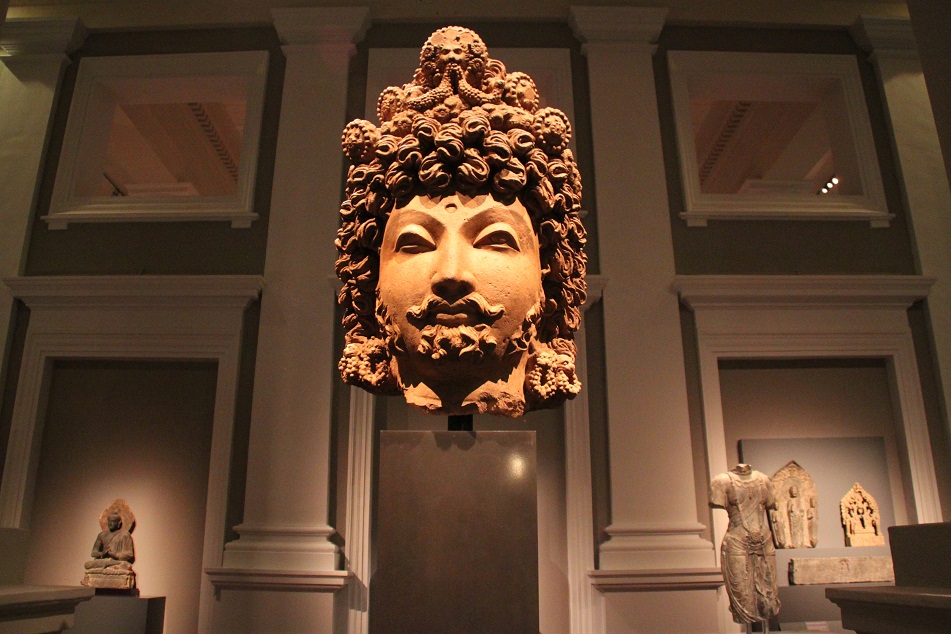
The head of a bodhisattva from the fourth-century Gandhara (modern-day northern Pakistan and Afghanistan)


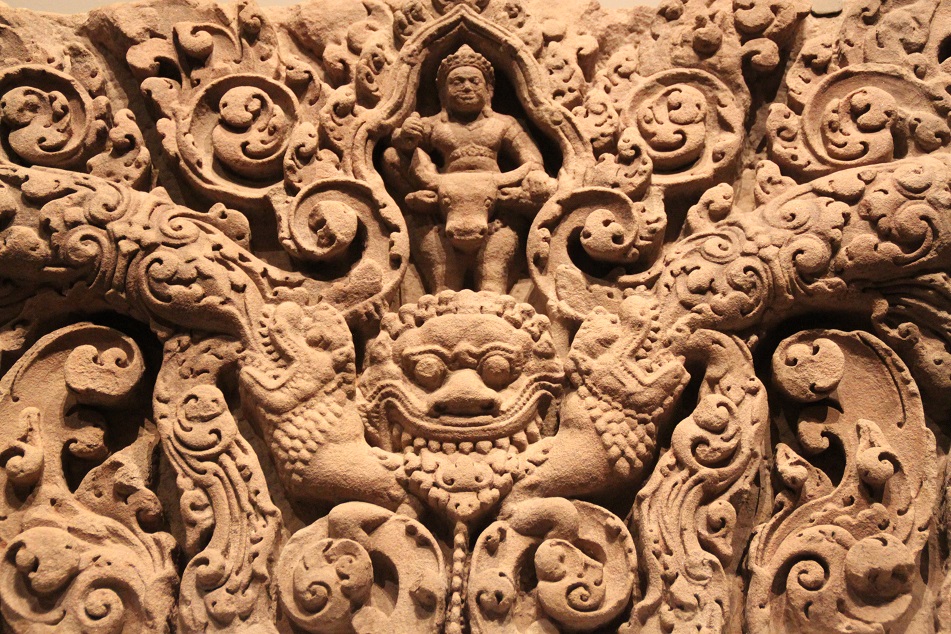
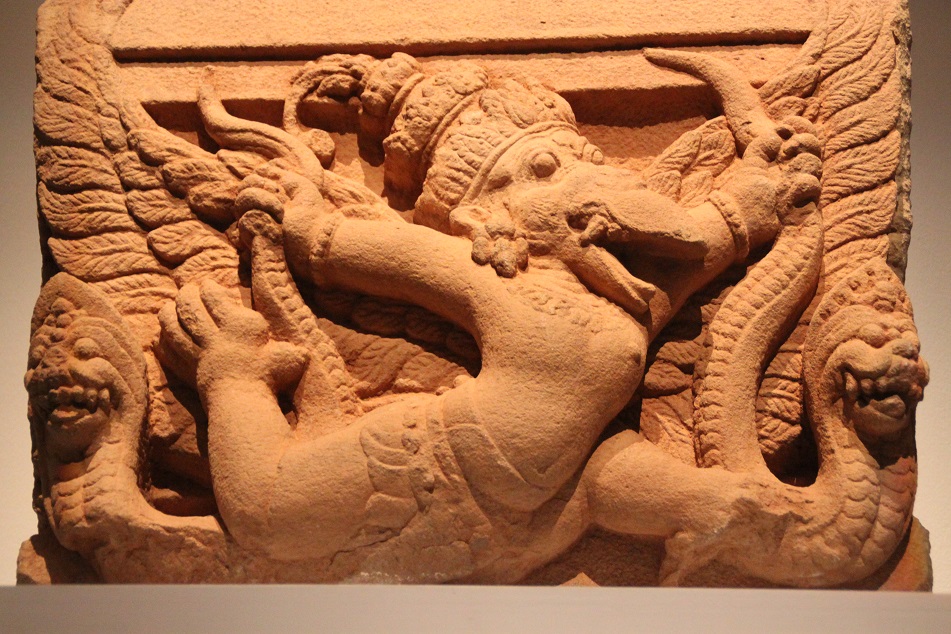
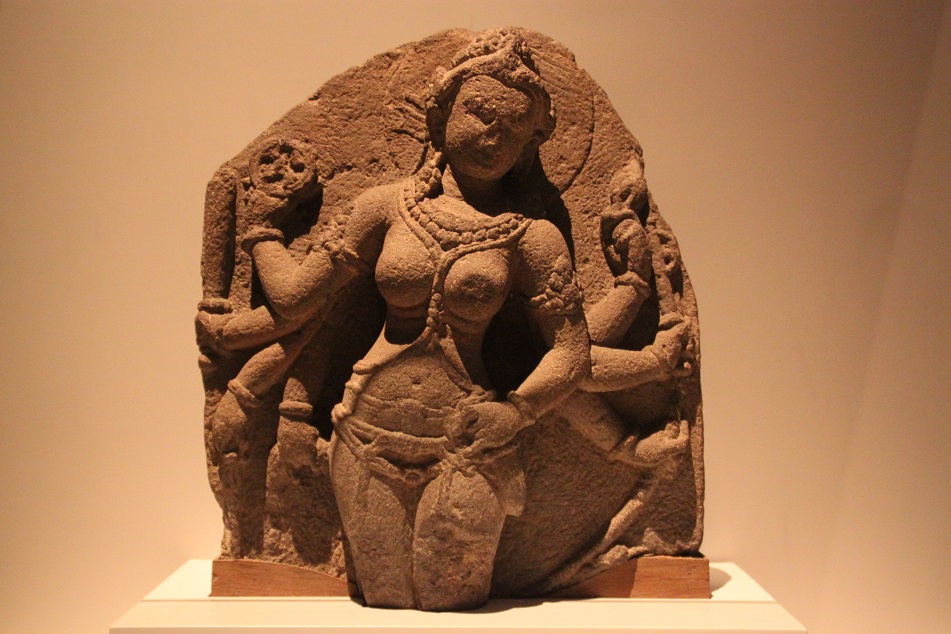

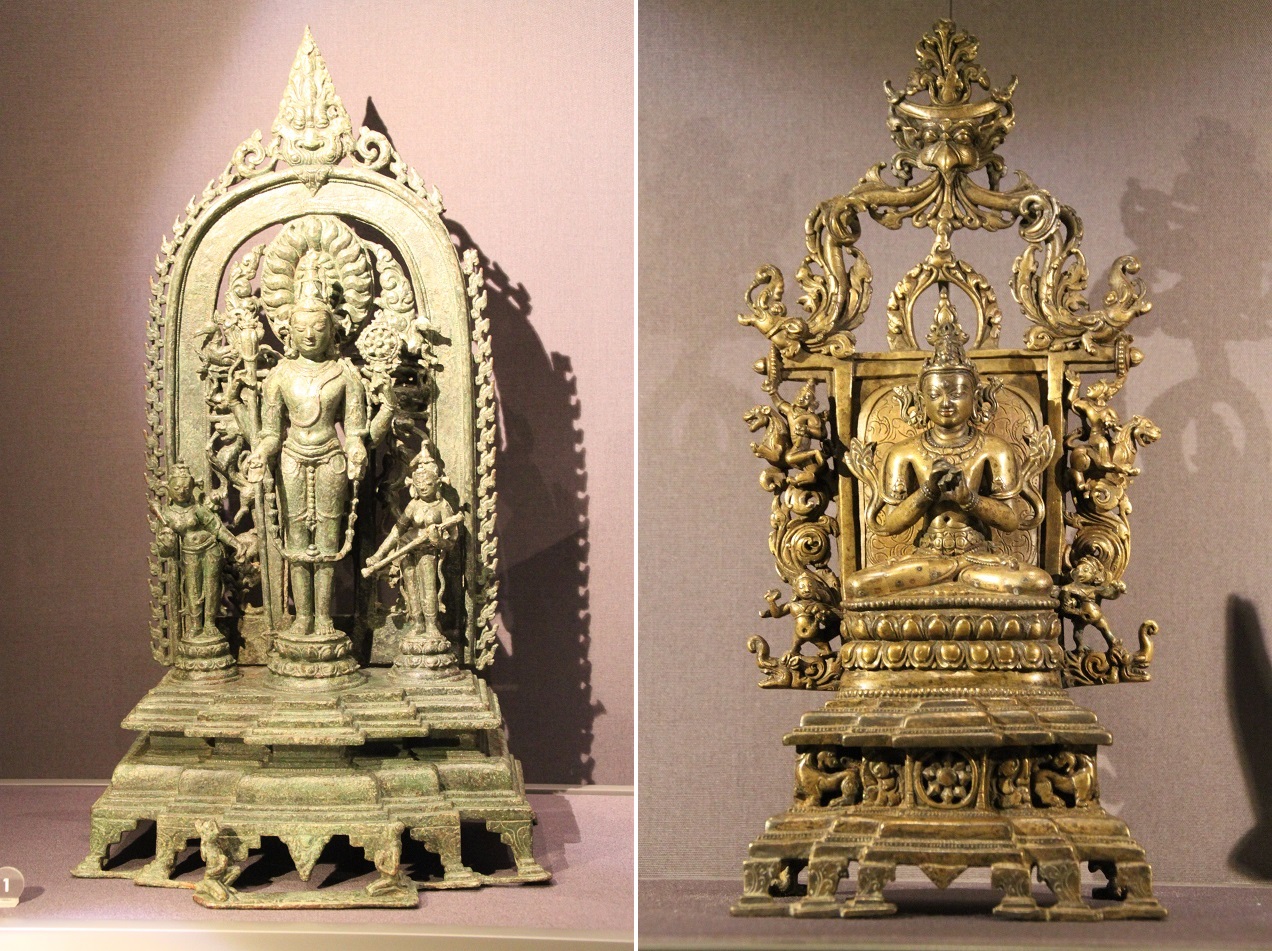

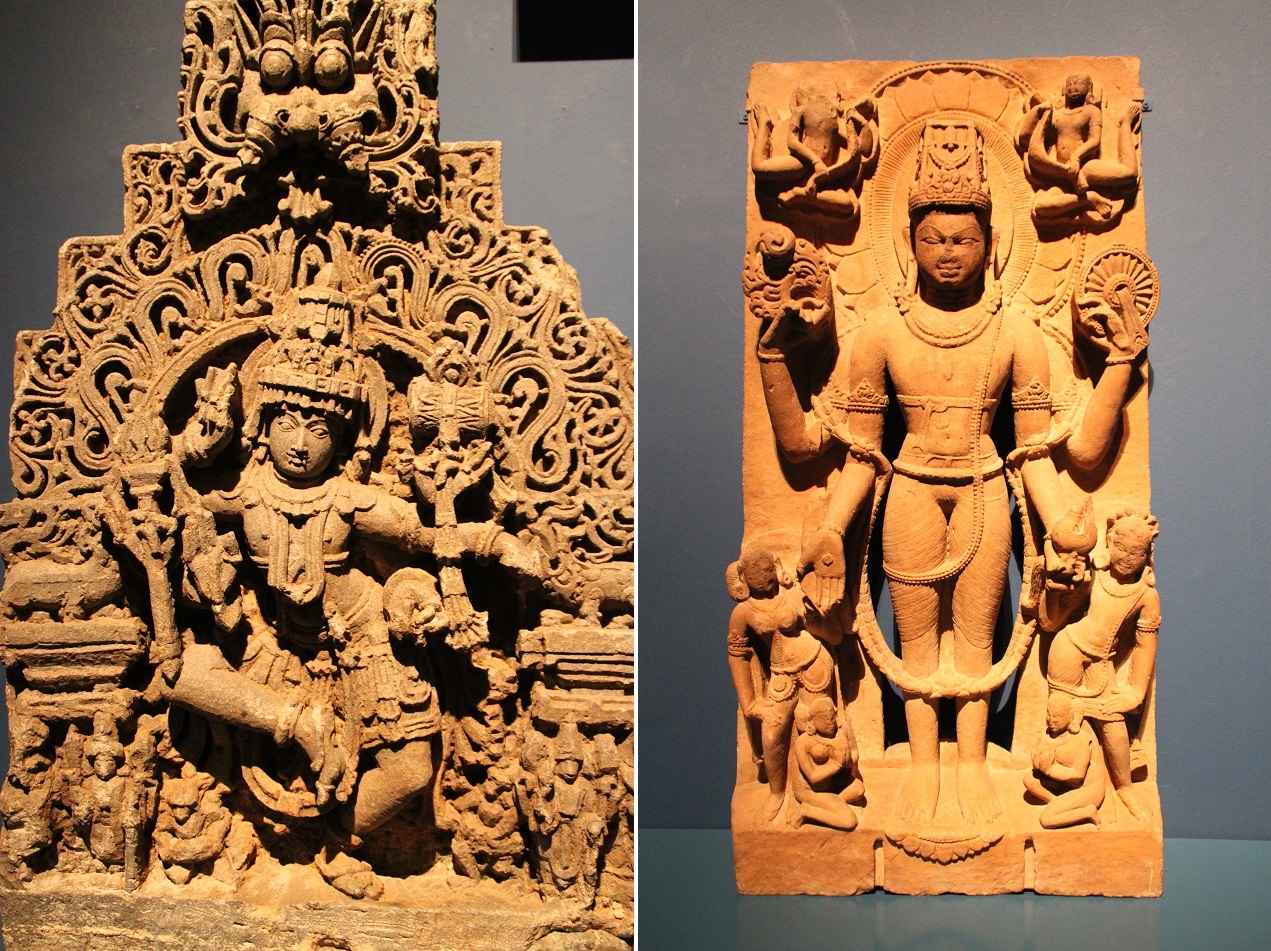
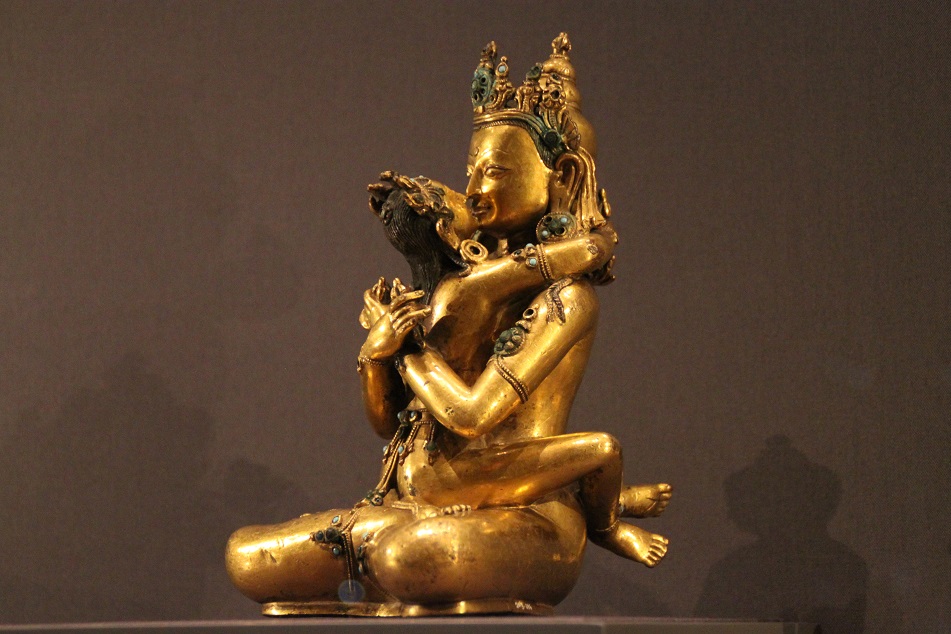
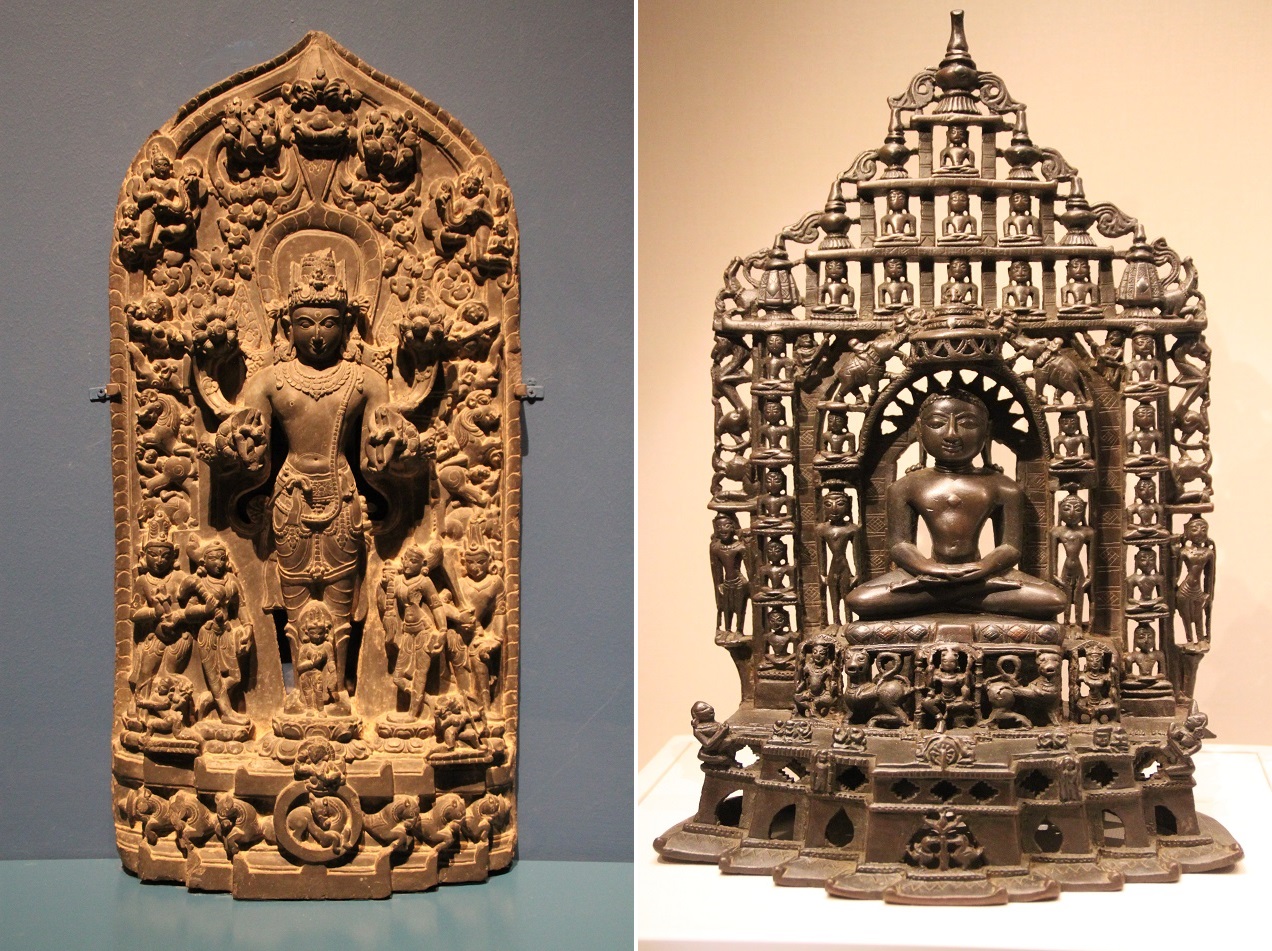



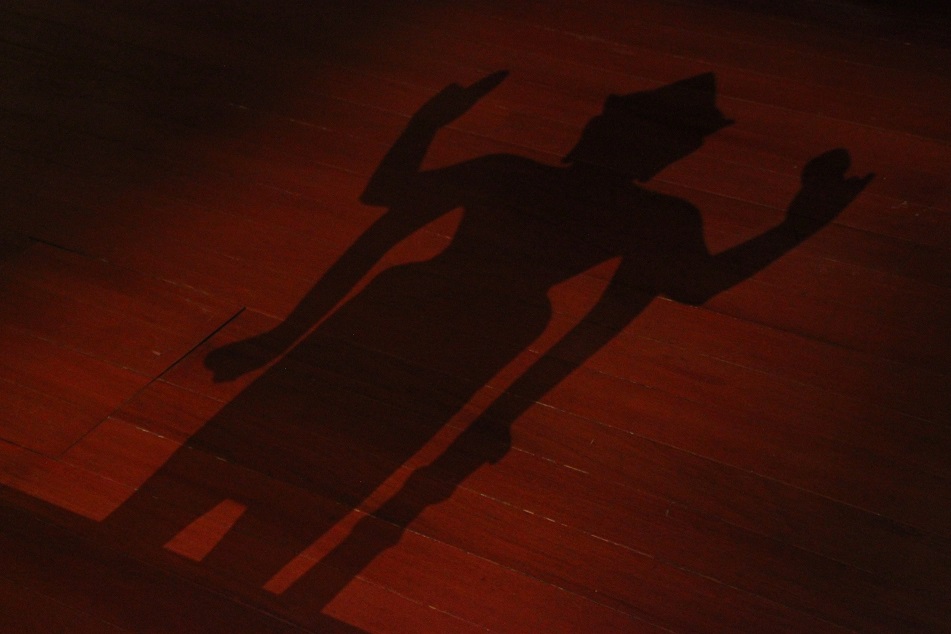

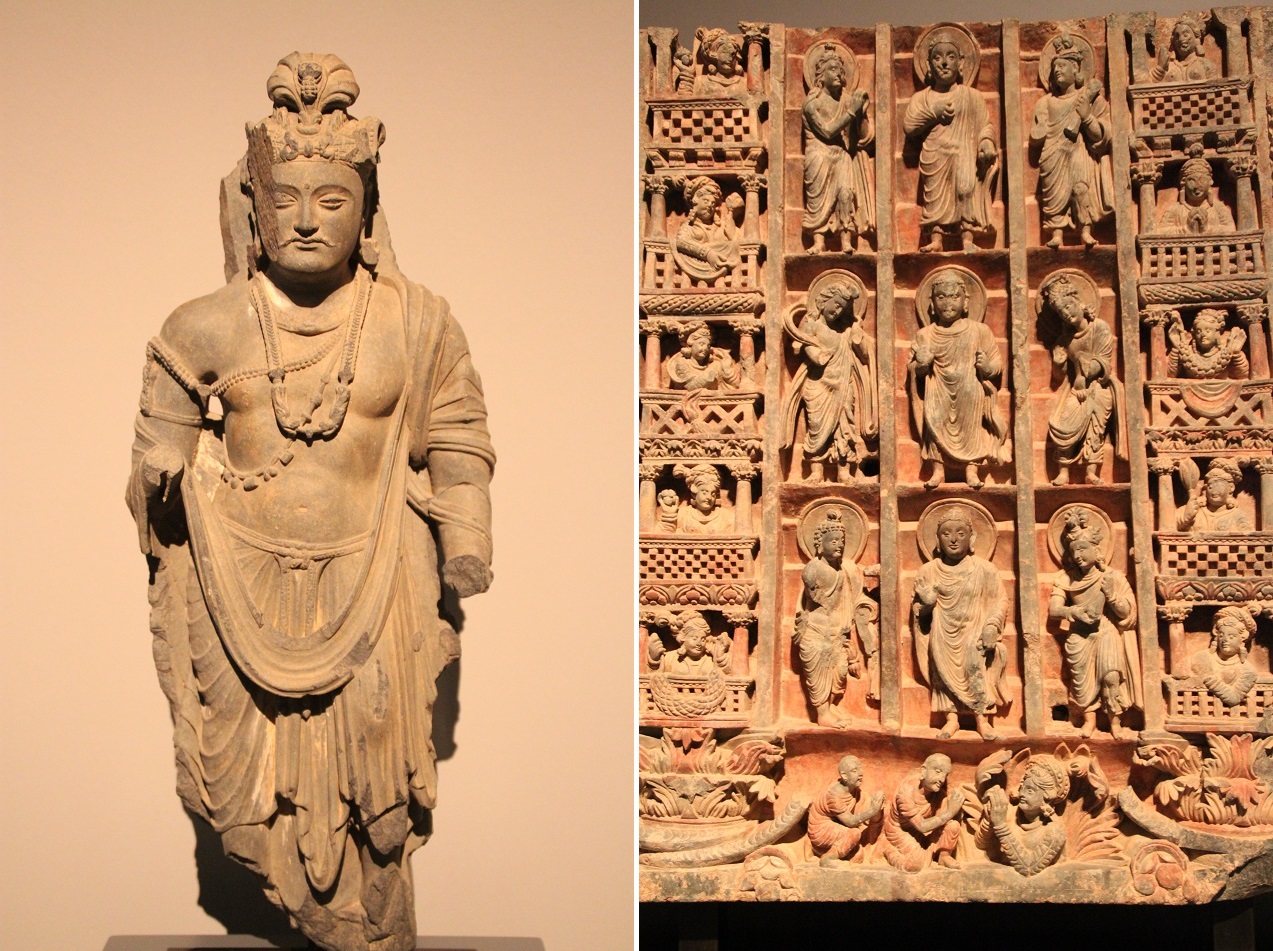

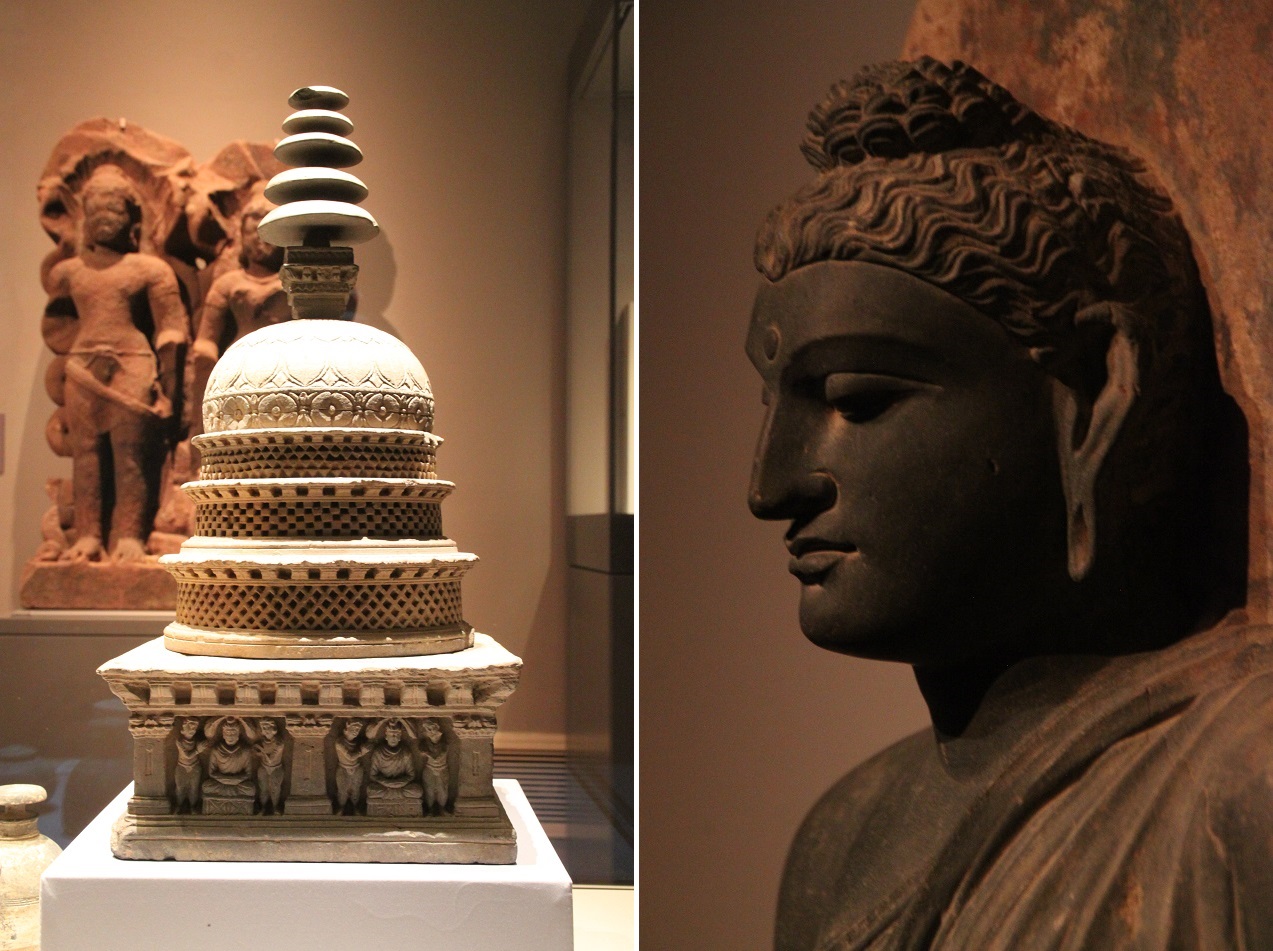

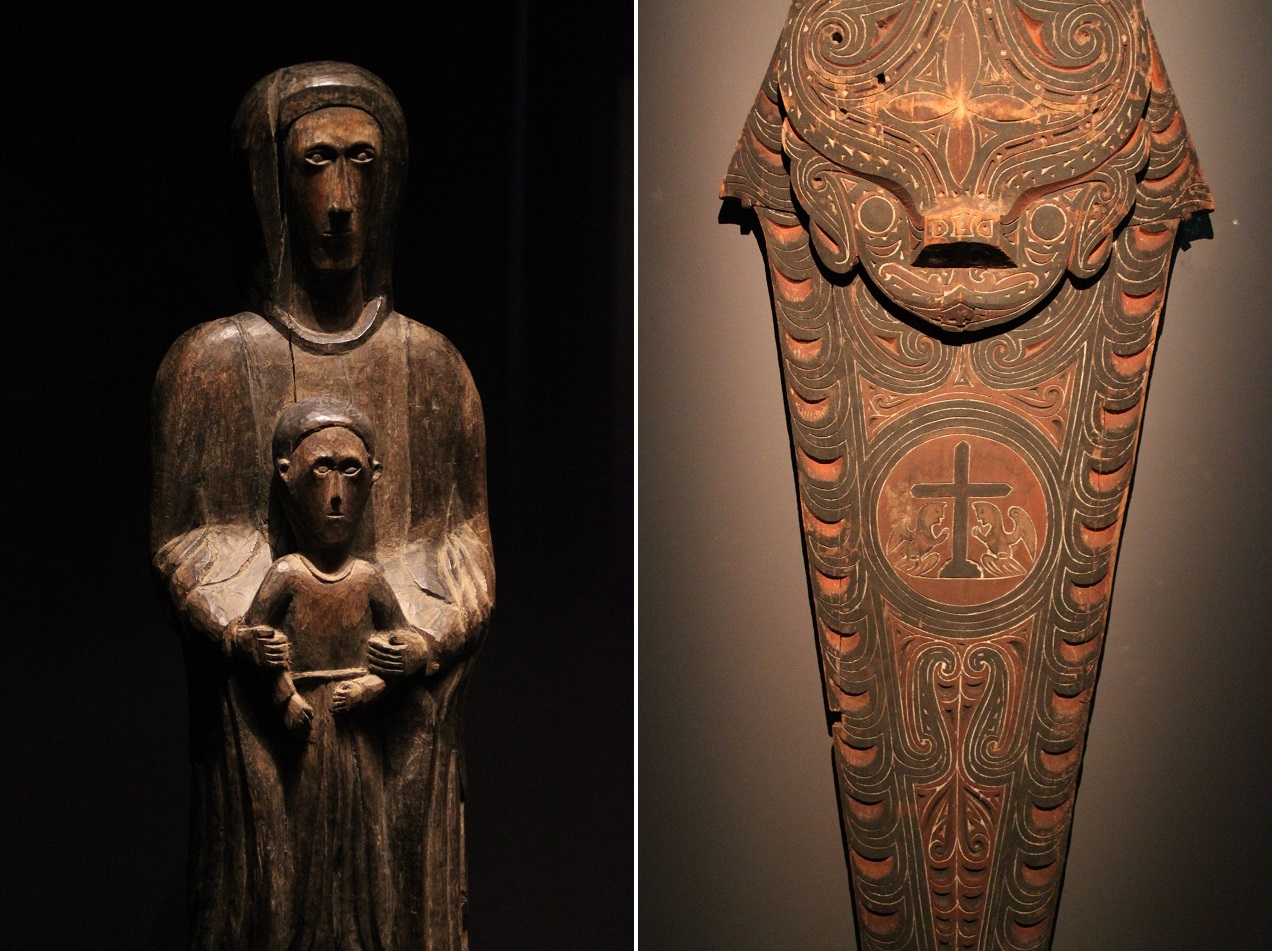


This is an excellent, picturesque and thought provoking article on the magnificent religious past of the south East Asian countries. The amount of patient research backing up the narrative is a hallmark of your travelogues. Thanks for sharing.
LikeLiked by 1 person
Always appreciate your encouraging comment, Umashankar. Those who have been following my blog for a while might have noticed my interest in archaeology and ancient culture. So you can imagine how happy and ‘refreshed’ I was when I went to the ACM.
LikeLike
Tremendous collection and your photos are wonderful.
LikeLiked by 1 person
Thank you, Steven. The artificial lighting at the museum certainly helped.
LikeLike
The intricate details of those statues and carvings are incredible. It is amazing that there were so many people capable of making these flawless designs and that it has lasted hundreds and thousands of years. I doubt any art that is being made today will last that long and almost none of it requires this level of skill and commitment.
I’ll have to check this out next time I’m in Singapore and need a mid-day break from the heat and humidity!
LikeLiked by 1 person
A guy I met in Bali told me that despite knowing how to carve a rock into an exquisite art, he wouldn’t be able to recreate the centuries-old intricate decorations at adorning the island’s many temples.
You should definitely visit this museum, Jeff. And if the heat becomes too unbearable, outside you can get Singapore-style ice creams — try the durian flavor!
LikeLike
You know, I live in Singapore and I have not stepped into the Asian Civilizations Museum before. Time to get out of the house…
LikeLiked by 1 person
It’s funny how we tend to travel to places far from home before we start exploring our own backyard. That happens to me too.
LikeLiked by 1 person
Very true 😂
LikeLiked by 1 person
I’ve never had the skill to learn the intricacies of Buddhism or Induism (for somebody who was taught about mono-theistic religions they are really complicated!) but I really love their styles. It was surprising to see the Gandahara art and the mélange between east and west there. In my travels around that part of the world I’ve often thought that we’re really missing a lot, there, and that they had a past so much more diverse than their current present. Was there anything about the Bukharan Jews or the shamanic creeds of Siberian peoples?
Fabrizio
LikeLiked by 1 person
Have you heard of Mes Aynak? It’s an impressive ancient Buddhist site which is unfortunately facing too many threats. First, it’s located in Logar Province, one of the regions in Afghanistan where the Taliban is most active. Then there’s this Chinese mining company which for years has been trying to exploit the site for its copper deposit.
I don’t remember reading or seeing anything about those communities that you mentioned at the ACM. But then there are parts of the museum which I have yet to explore.
LikeLiked by 1 person
No, never heard of Mes Aynak. I dread to think what will come out of it. What’s with wahhabists and this urge to destroy everything ancient? I could understand – not accept, but understand – them destroying other religions’ monuments, but when they bulldoze even their own mosques it makes even less sense (as they did in Syria or Mali). Looking forward to the next parts of the museum!
LikeLiked by 1 person
I’m replying to this comment from my hotel room in Beirut (yes, finally I made it here!). Based on my observation and what the local people told me about life in this city, it sounds like Beirutis are in many ways more relaxed than many Indonesians when it comes to religion. Sure there are serious problems here, but I really wish people in my home country could see that there’s more of the Middle East than the ultraconservative way of life that dictates the Saudis.
LikeLiked by 1 person
Yay! Well done for getting there. Remember to check out Barbar for THE BEST shwarma and kebabs ever!
LikeLiked by 1 person
Ohh the food! I have new favorite dishes every day here.
LikeLiked by 1 person
Lovely piece on the different religions and faiths in Asia, and pristine shots that you took at Asian Civilisations Museum (ACM)/Kwan Im Thong Hood Cho Temple Gallery. Buddhism and Hinduism are indeed two of the most influential faiths in the region – you could be in India, Thailand, Singapore or Malaysia and it wouldn’t be too hard to find a temple catered to these faiths. The head of a bodhisattva from Gandhara is a sculpture to marvel at. Impressive and love how you brought out the warm tones. It is interesting to wonder how so many of these artifacts survived history and as you mentioned, turbulent past. They were probably in the hands of very important people or people of influence, and so gotten taken care of and passed down to the right hands.
LikeLiked by 1 person
I was like a child in a candy shop when I entered the Kwan Im Thong Hood Cho Temple Gallery. It reminded me of why I fell in love with ancient art at the first place. I mean, look at those intricately-carved stones. Just beautiful!
As for artifacts displayed at museums today, some have indeed been changing hands several times. I’m not sure about the ones at this gallery, though. But I believe showing them to the public is a good way of educating people about the importance of preserving heritage sites all over the globe.
LikeLiked by 1 person
I visited this museum decades ago (excuse me for telling you just how many decades) and all I remember is climbing steps and seeing Mogul paintings. Did you happen to notice if they were still being displayed?
LikeLiked by 1 person
I believe the museum has changed a lot since your visit, which is of course a reason for you to return. I don’t recall seeing any Mughal/Mogul paintings when I was there. They might have moved them somewhere, or I just happened to not see them.
LikeLiked by 1 person
You take beautiful photos, and what a gorgeous place! Museums are often inherently peaceful places; I can hardly imagine how much so this one must be.
LikeLiked by 1 person
Thank you, Maia. Most museums that I’ve visited were indeed peaceful. However, now a new kind of ‘museum’ is becoming more and more common: one that encourages its visitors to ‘interact’ and take photos with the museum’s collection because… Instagram! Luckily the ACM is that kind of place where people come to learn.
LikeLiked by 1 person
My favorite museum is very interactive. The children’s museum in my home town not only encourages, but is designed around handling things, trying out machinery, opening and closing doors to find more things to learn about, and so on. It’s even fun for adults so the ones who brought the kids along aren’t bored to tears. I still enjoy going when I’m back there.
LikeLiked by 1 person
I can imagine my younger self enjoying that kind of museum, although kids also need to learn how to treat and take care of centuries-old artifacts, i.e. not touching them. I think I learned about it when I went to the Louvre — my cousin constantly reminded me to keep my hands off the museum’s collection.
LikeLiked by 1 person
When I was younger and didn’t have the money or time to travel to exotic lands, I would go to museums and immerse myself in the artifacts of them instead! One of my favorite escapes was the Asian/Himalayan hall at the Art Institute of Chicago, where I could almost imagine myself somewhere far, far away. Even later, when I wanted a fix of something too far away to get to, I would enter these galleries and others to “travel.” Your photos took me right back to those days!
LikeLiked by 1 person
The lack of good museums in Indonesia was one of the reasons why when I was a lot younger I wasn’t really interested in visiting them. Instead, like many Indonesians, I’ve been to Borobudur and Prambanan several times. I guess I’m fortunate enough to live on the same island with those two magnificent ancient sites.
When you’re in Singapore you may want to visit this museum, Lex. You won’t regret it!
LikeLiked by 1 person
Both the photography as well as article forms an interesting reading; thereby enhancing one’s knowledge base on the subject.
LikeLike
Thank you for reading this blog post, Subhamoy. Glad you enjoyed it.
LikeLike
Amazing, such a world wonder.
LikeLike
Indeed. Thanks for dropping by, Timothy.
LikeLike
As a fellow lover of ancient temples I am delighting in your photos inside the Singapore ACM! I’d be spending at least a few weeks returning to gaze at some of those beauties and imagining how they initially looked inside some of the ruined temples.
LikeLiked by 1 person
I know right? I think I grinned a lot when I was there. I was so happy being surrounded by those beautiful artifacts.
LikeLiked by 1 person
Simply an incredible piece of history and discussion of East Asian religion you’ve created with this post, Bama. The richness of the different religions and philosophy of Asia is unparalleled, and you show this with both words and with photos (the 34-arm Avalokiteshvara of Yunnan province, China is incredible – great shot!). All evoke admiration of both culture and community of this land ~ beautiful work, Bama.
LikeLiked by 1 person
I just returned from a trip to Lebanon where I saw the world’s largest Roman temple. The details are amazing and they made me think of those beautiful artworks created in South, Southeast, and East Asia centuries ago.
LikeLike
You did a great job capturing the priceless collection of ancient sculptures, Bama! I think the ACM is probably my favorite museum in Singapore, if not the wider Southeast Asian region – it was my second time there and at no point was I ever bored of those gorgeous, centuries-or even 1,000-year-old artifacts. Next time we go we should probably budget an entire day for the galleries we missed!
LikeLiked by 1 person
Yes please! I agree with you; to me the ACM is also one of my favorite museums in the region (for apparent reasons), and visiting this particular gallery made me think of what needs to be done to the Museum Nasional in Jakarta to make it look more interesting because it has such great potential.
LikeLiked by 1 person
What a treasure of a place. A feast place to linger for hours and bask in the serenity of the imagery. Your photos are sublime.
LikeLiked by 1 person
A perfect place to let our imagination wander way back to the past when ancient kingdoms ruled this vast continent.
LikeLike
Those pieces are absolutely gorgeous! I’d never even heard of the ACM but it’s totally the kind of museum I could spend an entire day in and still want to come back. I love how they even covered Gandharan Buddhism, which, along with Bactrian Buddhism, fascinates me to no end. I definitely have to make a visit when I’m in town.
LikeLiked by 1 person
Gandharan Buddhism is so fascinating, isn’t it? Probably the fact that it is lesser known to most people than other schools of Buddhism makes it even more interesting. I’ve been dreaming of going to the Bamiyan Valley one day in the future.
LikeLike
So ve always wondered what was t that created so much spiritual thought in Asia? Was it abundance? Also I wonder why we haven’t lived up to our traditional art and architecture. Why are modern Asian buildings, craft, accessories etc not carrying forward these rich motifs?
LikeLiked by 1 person
Exactly my question to a local driver on one of my visits to Bali some years back. He said to create such exquisite artworks today would cost a fortune. But I believe that was also the case back then when those highly-ornate temples were built. Or is it because now people have different priorities? Or different ways of spending money? Or it’s just because minimalism is more appealing to most?
LikeLike
Clearly one of Asia’s best museums. You’ve done it full justice with your photography.
LikeLiked by 1 person
Of all bloggers that I’ve been following, you certainly are among those who would enjoy this museum the most.
LikeLike
Hi Bama,
I just found your well researched and beautifully photographed blog! And when i saw your posts on the ACM, i had to write to you. I used to guide as a docent at the ACM for over 7 years. I love the place!!!
Thank you for your painstaking work.
From a history buff!
Radhika
LikeLiked by 1 person
Hi Radhika,
What a nice surprise that you found my blog! Those years you spent for working at that fascinating museum must have created some nice memories. If I get the chance, I would go back in a heartbeat.
Thanks for reading!
LikeLiked by 1 person